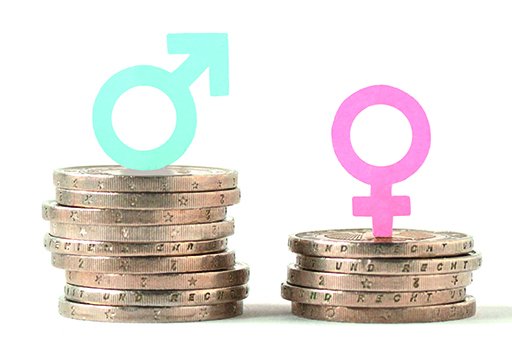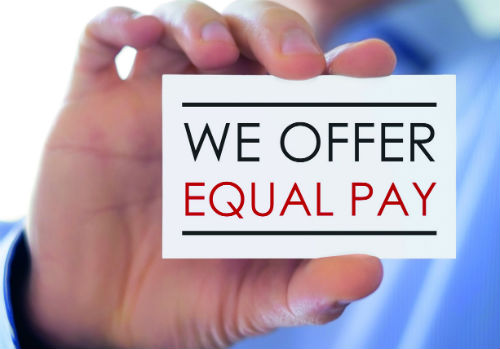People & team training

Look out for the gender pay gap
In People & team training
Bookmark
Record learning outcomes
Whether you are an employer, manager or a member of staff, the gender pay gap could be affecting you. Here’s what to do about it
The UK is one of the first countries in the world to introduce mandatory gender pay gap reporting. The revelations this has uncovered were hitting the headlines for months before last month’s deadline, when any organisation with 250 or more employees had to publish its gender pay gap data and a written statement on its website and report its data to the government.

What is the gender pay gap?
Many people are still unsure what the gender pay gap is and conflate it with unequal pay, but there is a distinct difference. The gender pay gap is the difference in average hourly earnings between men and women across an entire organisation or sector. Unequal pay is the unlawful practice of paying men and women differently for performing the same or similar work or work of equal value.
Government figures show that women in the UK today earn on average 18 per cent less than men. This gender pay gap exists because women tend to work in lower-paid occupations and sectors, and occupy less senior roles. Many women also take time out of the labour market and work part time because of unequal sharing of childcare. Others find it hard to find work that suits their skills because many employers still do not advocate or promote flexible working, home working or job sharing.
Gender stereotypes and workplace culture are also factors, with many organisations still suffering from – often unconscious – gender bias in favour of men when it comes to recruitment, promotion and the composition of boards and executive committees.
The pay gap in pharmacy
Pharmacy companies were among organisations with 250 or more employees that were required to report their gender pay gap figures. Dudley Taylor Pharmacies and Walter Davidson & Sons reported no pay gap in their company.
Several companies within the pharmacy and pharmaceutical sector reported that, on average, women were paid more than men. These included L Rowland & Company (Retail), PCT Healthcare, Sigma Pharmaceuticals, Waremoss, Whitworth Chemists and WR Evans Healthcare.
Companies reporting a gender gap that favoured men included AAH Pharmaceuticals, Alliance Healthcare Management Services, Bestway (owner of Well Pharmacy), Boots Management Services, Day Lewis, LloydsPharmacy, Paydens and Phoenix Healthcare Distribution.
A driver for change
While the government admits that most employers will have a gap in the first year, the key next step is to take action to address it, and the visibility of annual reporting is a good driver for this change. The Company Chemists’ Association says it hopes the openness and transparency provided by the requirement to report information on gender pay on an annual basis will continue to raise awareness and drive the right behaviours and decisions throughout pharmacy workplaces.
“We recognise that a more diverse and inclusive workforce leads to better decisionmaking at all levels and welcome efforts to drive improvement in this area, across the British economy,†says CCA chief executive Malcolm Harrison. “In fact, we have seen this working well first hand, as our own board of directors has well-balanced gender representation.â€
Closing the gender pay gap is not only the right thing to do, it’s good for business. Management consultant McKinsey estimates that closing gender gaps could add £150 billion to the UK GDP by 2025, and research shows that a more diverse and inclusive workforce brings new skills, creativity and innovation, sounder decision-making and higher levels of staff satisfaction and retention.
What businesses can do
In addition to publishing figures on their gender pay gap, employers are being encouraged to develop an action plan detailing how they intend to close the gap, but there are many factors to address.
HR consultant and trainer Tara Daynes says the gap often comes about as an indirect result of gender, rather than directly. “People are usually promoted and paid more due to length of service, increased skills, qualifications and experience, but women may have fewer opportunities for training and qualifications or build up a career due to having career breaks for maternity leave and childcare responsibilities that limit their availability,†she says.
“Companies must even out the pay balance by evening out the opportunities, usually through having family-friendly policies, protecting employment, pay and benefits for women on career breaks, ensuring women also have opportunities for training, development and promotion, and encouraging them to take up those opportunities.â€
Laura Chalkley, senior employment law adviser and partnership team manager at the National Pharmacy Association’s employment law advisory team, says that measures such as these will also be helpful if you want to attract and retain talent.
Opportunity for change
 Organisations that have reported on the gender pay gap because they have to, but are not committed to change, may be left behind.
Organisations that have reported on the gender pay gap because they have to, but are not committed to change, may be left behind.
“The compulsory gender pay gap reporting process is an opportunity for employers to drive positive change on diversity – not just in gender – and demonstrate to employees that they care,†she says Deborah Evans, managing director of consultancy Pharmacy Complete.
“Employers who demonstrate transparency and seek to understand why they have a gap, while engaging their employees in the solutions, are much more likely to create a culture that is positive and empowering.†And because unconscious bias occurs amongst all of us, Ms Evans suggests that having “regular feedback and review at senior leadership meetings can be helpful to check that this is not happening.
“When a company does not get it right, then learning from their mistakes and changing policy or direction will be seen as far more positive than burying the issue and hoping it will go away.
“Companies should have an action plan in place and regularly monitor against this, communicating to their workforce and showing that they are taking this issue seriously.â€
Explaining the gap
If your organisation’s reported gender pay gap has been an uncomfortable revelation for your staff, Ben Turner, HR director at Well, says that understanding the root cause of your gender pay gap and clearly explaining what this means should help to reassure colleagues who may feel aggrieved.
“For example, our differential is due to the current structure of our workforce, as we have a disproportionately high number of women in our store colleague roles,†he says.
Mr Turner suggests the first thing businesses can do to address the gap is to make sure they have processes in place to ensure fairness for all employees, and to be open and transparent about these, something he says is happening at Well. “While I am confident that we have robust pay structures in place and believe that our figures are in line with other retail businesses, we will be reviewing our role profiles and adverts to ensure there is no gender bias in them,†he says.
“We will also be auditing the gender split on our career development programmes to try to ensure equal male and female representation throughout our workforce and in our managerial roles. We have clearly communicated this across the business so that everyone fully understands what the gap really means and how we are addressing it.â€
Create a strategy
The National Association of Women Pharmacists (NAWP) says tackling structural inequalities can also help. “First, ideally before problems arise, the CEO or manager/owner needs need to take ownership of the gender pay gap situation and associated issues,†it says.
“They need to formulate a strategy and ensure lower-tier managers implement this across the company, and all grievances need to be taken seriously and investigated.
“Where big enough, ie not sole owner, there should also be one or more female members of staff on the board of the company,†recommends NAWP.
Steps for staff
If you are at the blunt end of the gender pay gap, Ms Daynes’ advice is to start by speaking to your manager or HR department to find out why the pay difference has come about. “Only resort to dispute resolution, grievance procedures or tribunal claims if you are absolutely sure that it is a discrimination issue or if the company policies and procedures are actively holding women back,†she says.
To do this properly, NAWP stresses that aggrieved staff need to be sure they are well informed. “Find out what the grievance procedure is for your organisation and follow it,†it says. “Don’t settle for an unsatisfactory response. Getting advice from Pharmacist Support and the PDA or other union/defence association may be wise, depending on the situation.â€
Although the gender pay gap remains the issue of the day, Ms Evans adds that “if a member of the team feels aggrieved about any issue – not just inequality in pay – then their employer should be fully supportive and implement their grievance process so that the employee is listened to and the complaint is properly considered.â€
"Acknowledging when things have not gone right is an important step to resolve any issue, and while government claims the pay gap in the UK is 'the lowest since records began', we all have a part to play, and a voice to raise, to make sure we eliminate it completely."
Â
